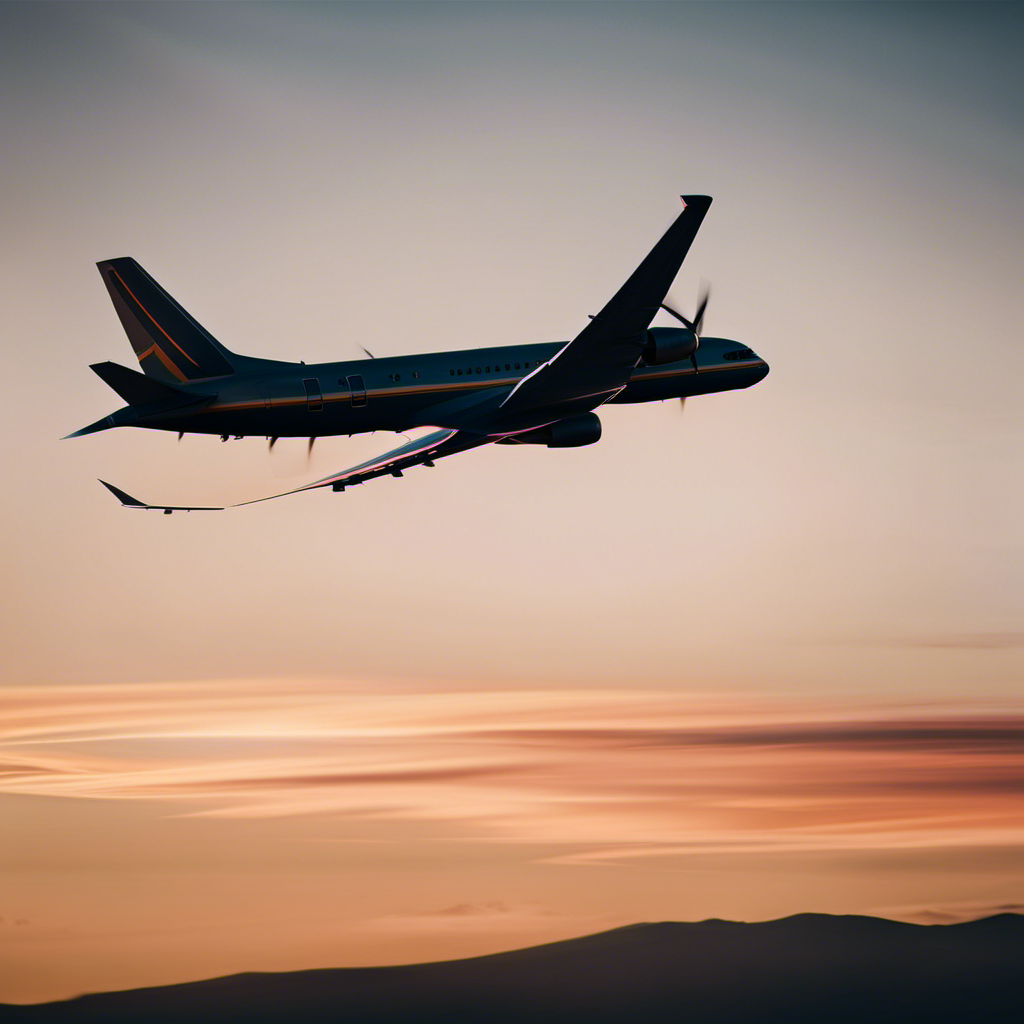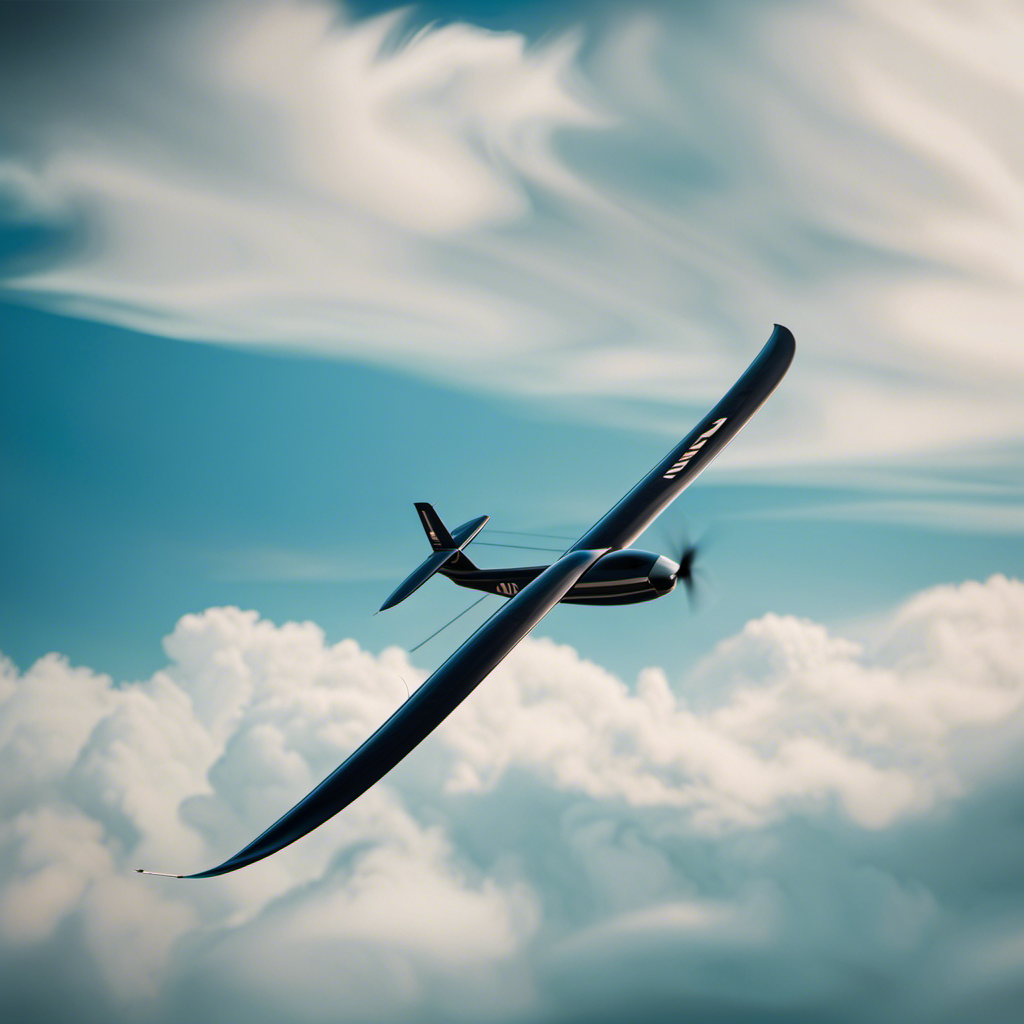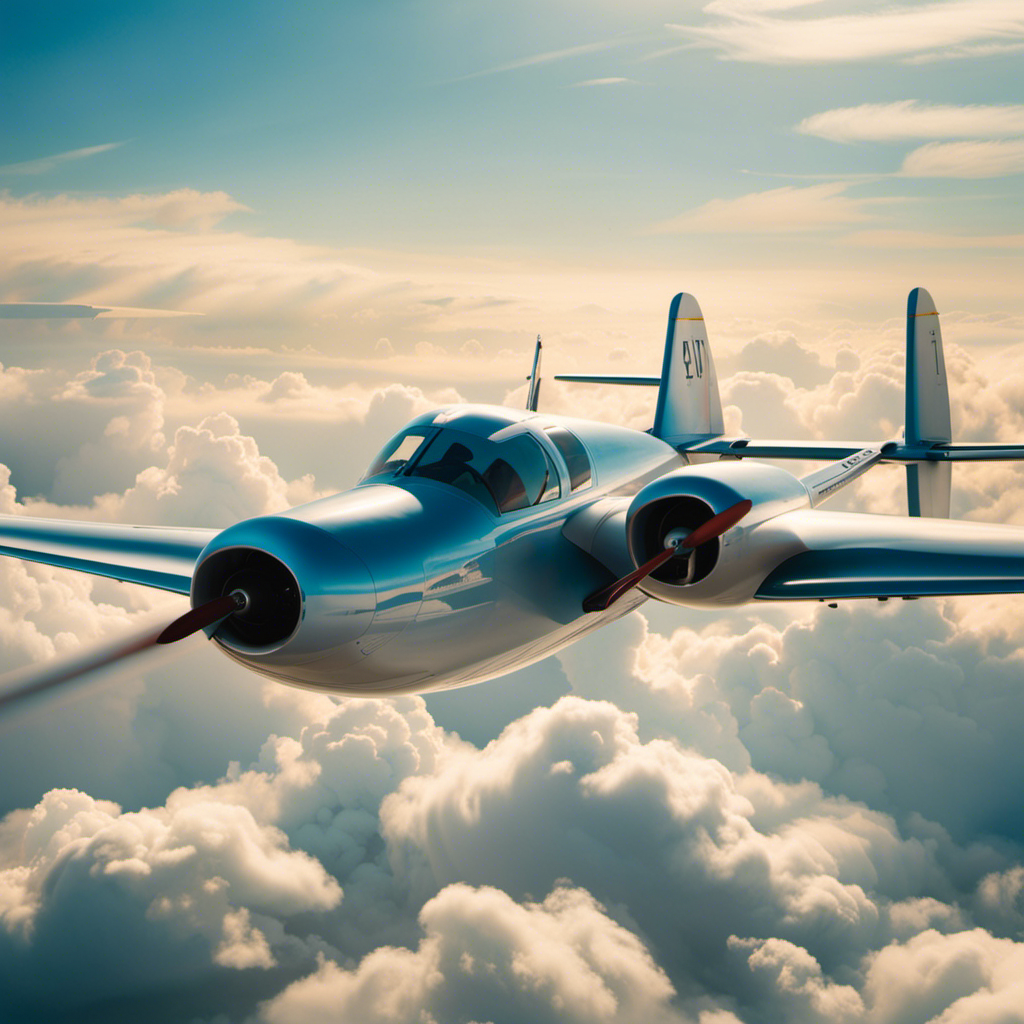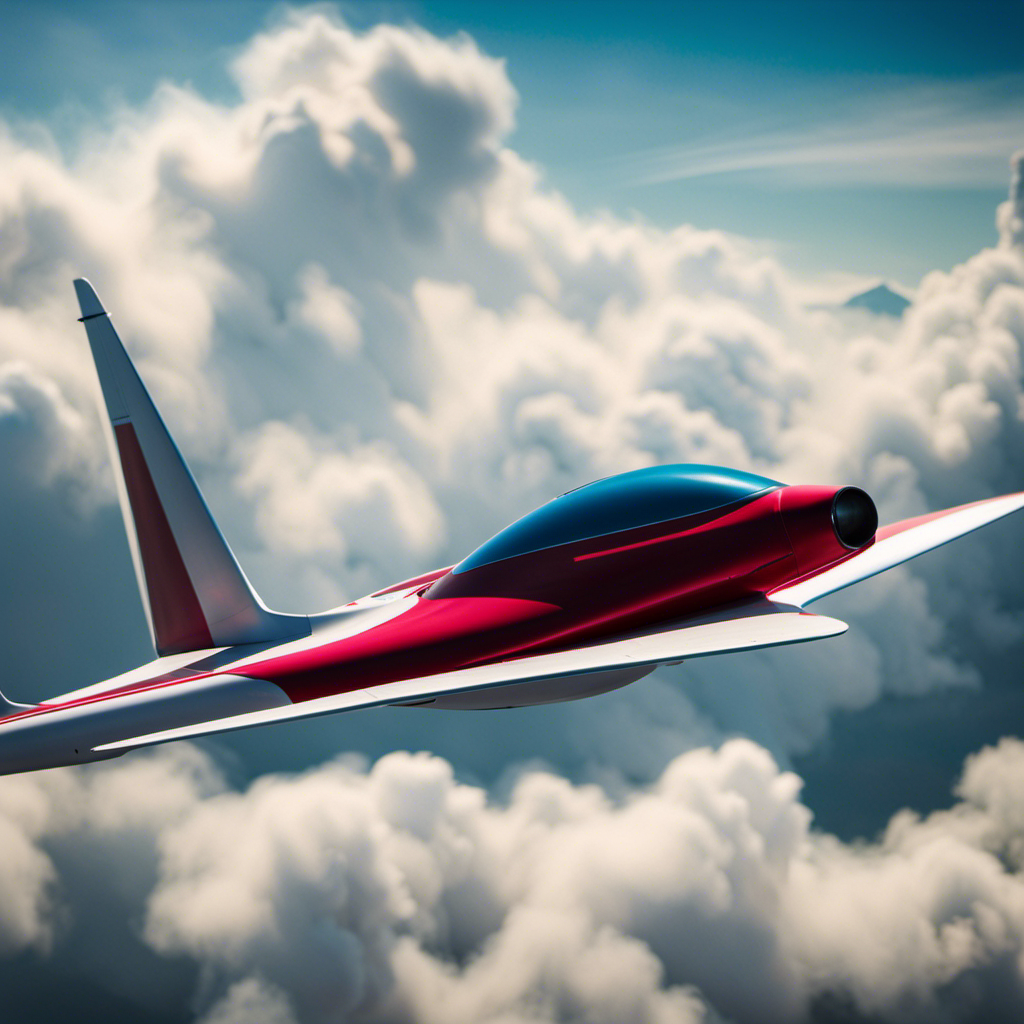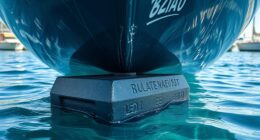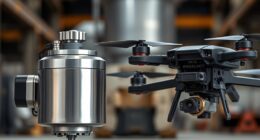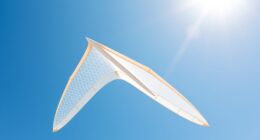Many individuals commonly say that the sky is the limit, however, for glider pilots, the sky signifies only the beginning. The duration that a glider can stay aloft has intrigued me for a while now. I am excited to delve into the technical details, tactics, and different factors that contribute to keeping these graceful aircraft flying.
From the design of the glider to the skill of the pilot, there are numerous elements that determine how long a glider can soar through the skies. Join me as we uncover the secrets behind the incredible staying power of gliders.
Key Takeaways
- Thermals and updrafts play a crucial role in extending glider flight time.
- Factors such as air traffic, wind conditions, and airspace restrictions can affect glider flight duration.
- Advancements in technology and materials will enable longer glider durations.
- Gliders offer unique advantages such as harnessing natural energy sources and providing a tranquil flying experience.
The Design of the Glider
The design of the glider determines how long it can stay up in the air. Two crucial factors in the glider’s design are the materials used and the aerodynamics.
The choice of materials is essential as it affects the weight of the glider. Lighter materials, such as carbon fiber composites, are often preferred as they reduce the overall weight and increase the glider’s endurance.
Additionally, the shape and aerodynamics of the glider play a significant role in its ability to stay in the air. Streamlined wings and fuselage reduce drag, allowing the glider to maintain its speed and glide more efficiently.
By optimizing these design aspects, gliders can achieve longer flight times and improved performance.
Now, let’s explore how weather conditions also impact a glider’s flight capabilities.
Weather Conditions
With favorable weather conditions, you can keep a glider aloft for extended periods. Here are some key factors that contribute to a glider’s ability to stay in the air:
-
Thermals: These are columns of rising warm air that gliders can use to gain altitude. When heated by the sun, the ground warms up, causing the air above it to rise. Glider pilots can search for thermals by looking for cumulus clouds or by sensing changes in air temperature.
-
Wind patterns: Different wind patterns can greatly affect the flight of a glider. Ridge lift occurs when the wind encounters a slope or ridge, creating an upward force. Wave lift is generated when strong winds pass over mountains, forming standing waves of rising air.
-
Cumulus clouds: These fluffy, white clouds often indicate areas of strong updrafts, where gliders can gain altitude. Pilots carefully observe the cloud’s shape, size, and movement to determine whether it is suitable for soaring.
Understanding the behavior of thermals and wind patterns is essential for a glider pilot to maximize their time in the air.
Transitioning into the subsequent section about ‘soaring techniques,’ pilots employ various tactics to harness these natural forces and extend their flight duration.
Soaring Techniques
To extend your flight duration, you’ll need to master the art of soaring by utilizing various techniques.
Soaring techniques involve using rising air currents, such as thermals, ridge lift, and wave lift, to stay aloft without an engine.
One technique is thermal soaring, where you locate and circle within thermals, which are columns of rising warm air.
Another technique is ridge soaring, which involves flying along the windward side of a hill or mountain, using the wind deflected upwards to gain lift.
Advanced maneuvers such as dynamic soaring and cloud flying can further enhance flight duration.
Dynamic soaring involves exploiting the energy of wind shear between different layers of air, while cloud flying involves using cumulus clouds as markers for areas of lift.
Mastering these techniques requires practice and a deep understanding of aerodynamics.
With these skills, a glider pilot can maximize their time in the air and enjoy longer flights.
Transitioning into the subsequent section about pilot skill and experience, it is important to note that these techniques require a high level of proficiency and expertise.
Pilot Skill and Experience
You can enhance your flight duration by honing your piloting skills and gaining valuable experience.
Pilot training plays a crucial role in maximizing the time a glider can stay up in the air. By mastering techniques such as thermalling, ridge soaring, and wave soaring, pilots are able to find and utilize rising air currents efficiently.
Additionally, understanding the safety measures and procedures is essential for a successful and prolonged flight. This includes conducting pre-flight inspections, understanding weather patterns, and practicing emergency procedures.
By consistently improving their skills and knowledge, pilots can increase their flight duration and ensure a safe flying experience.
Transitioning into the next section about ‘glider performance,’ it is important to note that the pilot’s proficiency directly impacts the overall performance of the glider.
Glider Performance
The performance of a glider can be greatly improved by enhancing the pilot’s skills and experience. When it comes to glider efficiency and aerodynamic performance, every little detail matters.
The shape and design of the glider’s wings, fuselage, and tail all play a crucial role in reducing drag and maximizing lift. Smooth and precise control inputs from the pilot are essential to maintain optimal glider performance. By understanding the principles of aerodynamics and knowing how to exploit them, a pilot can make the glider fly at its best.
Additionally, regular practice and experience allow the pilot to master various techniques, such as thermalling and ridge soaring, which can significantly enhance the glider’s ability to stay airborne for extended periods. A well-performing glider, coupled with skilled piloting, lays a solid foundation for maximizing flight time and exploring the limits of soaring.
As we delve into the next section on maintenance and upkeep, it is important to ensure that the glider remains in top-notch condition to maintain its performance capabilities.
Maintenance and Upkeep
Regular maintenance is essential for keeping your glider in optimal condition. Neglecting maintenance can lead to increased maintenance costs in the long run and a shorter equipment lifespan.
To ensure the longevity and performance of your glider, here are three important maintenance tasks:
-
Regular inspections: Conduct thorough inspections to identify any signs of wear and tear, such as cracks or loose fittings.
-
Cleaning and lubrication: Keep your glider clean to prevent dirt and debris from affecting its performance. Regularly lubricate moving parts to ensure smooth operation.
-
Component replacement: Replace worn-out or damaged components promptly to avoid further damage and ensure safe operation.
By following these maintenance practices, you can minimize maintenance costs and extend the lifespan of your glider.
Now that we’ve covered the importance of maintenance, let’s move on to flight planning and strategy, where we will explore how to maximize your time in the air.
Flight Planning and Strategy
When planning your flights, it’s important to consider weather conditions and potential hazards. Flight duration is a crucial factor in determining the success of a glider flight.
To maximize the time spent in the air, I meticulously study the weather patterns and look for areas with thermals and updrafts. These natural phenomena create rising currents of warm air that allow gliders to gain altitude and stay aloft for extended periods. By strategically navigating through these thermals and updrafts, I can extend my flight time and cover longer distances.
However, flight planning is just one aspect of ensuring a successful glider flight. There are also external factors, such as air traffic, wind conditions, and airspace restrictions, that must be taken into account to ensure a safe and efficient journey.
External Factors
To ensure a safe and efficient journey, you need to consider external factors such as air traffic, wind conditions, and airspace restrictions. These factors play a crucial role in determining the duration of a flight and can greatly impact the performance of a glider.
Air Traffic: The presence of other aircraft in the sky can affect the route and altitude a glider can take, potentially causing delays or diversions.
Wind Conditions: The speed and direction of the wind can either help or hinder a glider’s ability to stay aloft. Utilizing favorable wind patterns can extend the flight duration.
Airspace Restrictions: Certain areas may have restrictions or limitations on glider flights, which must be taken into account during flight planning.
Considering these external factors is essential for maximizing the flight duration and ensuring a successful glider journey. By carefully analyzing and adapting to these conditions, record-breaking flights can be achieved without the need for an intermediary step.
Record-Breaking Flights
In my discussion on record-breaking glider flights, I will delve into the fascinating realm of the longest glider flights in history. These flights have pushed the boundaries of human endurance and engineering capabilities, with pilots staying aloft for astonishing durations.
The challenges and achievements faced by these pilots are truly remarkable. Despite the numerous obstacles faced during these flights, such as adverse weather conditions and limited resources, these pilots have managed to achieve remarkable feats.
Looking ahead, there are exciting possibilities and innovations in this field. Advancements in materials, aerodynamics, and energy storage hold the potential for even longer, more efficient glider flights in the future.
These record-breaking flights have captivated the imagination of people around the world and have showcased the incredible potential of glider aviation. With continued advancements and innovations, we can expect to see even more impressive achievements in the years to come.
Longest Glider Flights in History
You can’t believe the longest glider flights in history! Gliders, with their exceptional endurance capabilities, have achieved remarkable flight durations due to various factors influencing their performance. Here are three incredible examples:
-
Wave Lift: Gliders can ride on powerful air currents called wave lifts, which occur when wind encounters mountains or other obstacles. This phenomenon allows gliders to soar to extreme altitudes, enabling longer flights.
-
Weather Conditions: Favorable weather conditions, such as strong thermals and gentle winds, can significantly enhance a glider’s flight duration. Pilots carefully analyze meteorological data to choose the best time and location for their flights.
-
Pilot Skill and Strategy: Experienced glider pilots employ advanced techniques to maximize their flight time. They use tactical flying maneuvers, like circling in thermals and ridge soaring, to stay aloft for extended periods.
These record-breaking glider flights demonstrate the incredible achievements of pilots and the challenges they face in pushing the boundaries of glider endurance.
Challenges and Achievements
Now that we have explored the longest glider flights in history, let’s delve into the challenges faced and advancements made in the pursuit of extended flight times.
In the quest for longer flight durations, glider pilots have encountered numerous challenges. One of the main obstacles is the limited energy available to sustain flight. Gliders rely on thermals, updrafts of warm air, to gain altitude and extend their time in the air. However, finding and exploiting these thermals can be a difficult task, as they are unpredictable and can vary in strength and location.
To overcome these challenges, pilots have made remarkable advancements in glider technology. The use of advanced materials, such as carbon fiber composites, has allowed for lighter and more efficient glider designs. Additionally, sophisticated instruments and navigation systems have been developed to aid pilots in locating thermals and optimizing their flight paths.
As we look ahead, the future holds exciting possibilities and innovations for glider flight.
Future Possibilities and Innovations
With advancements in technology and materials, the future of glider flight holds exciting possibilities for extended durations in the sky.
Future advancements in glider design and technology will enable gliders to stay aloft for even longer periods of time. Technological improvements in materials, such as lighter and stronger composites, will allow for increased glider performance and efficiency.
Additionally, advancements in aerodynamics and flight control systems will further optimize glider flight, reducing drag and maximizing lift. These innovations will not only extend the duration of glider flights, but also enhance the overall flight experience for pilots.
Benefits of Gliding
One of the benefits of gliding is that it allows for longer flight durations compared to other aircraft. Gliders can stay up in the air for extended periods of time, thanks to their unique design and aerodynamics. Here are some advantages of soaring:
-
Energy-saving: Gliders are designed to harness natural energy sources, such as thermals, ridge lift, and wave lift. By utilizing these forces, gliders can maintain altitude and even gain height without relying on an engine.
-
Silent flight: Gliders produce minimal noise, allowing pilots to experience the tranquility of the sky without the constant hum of an engine. This silence enhances the overall experience and allows for a closer connection with nature.
-
Aerobatic capabilities: Gliders are incredibly agile and can perform a wide range of aerobatic maneuvers. This provides an exhilarating and dynamic flying experience for pilots who enjoy pushing the limits of their aircraft.
Overall, gliding offers unique advantages that make it a popular choice for aviation enthusiasts seeking long flight durations and a thrilling flying experience.
Frequently Asked Questions
What are the safety precautions to take when gliding?
When gliding, it is important to prioritize safety by using proper safety equipment such as helmets and harnesses. Additionally, being familiar with emergency procedures, such as how to handle a sudden loss of lift, is crucial for a safe gliding experience.
Are there any age restrictions for flying a glider?
Age restrictions for flying a glider vary depending on the country and organization. In the US, a person must be at least 14 years old to fly a glider solo. Training requirements include ground school and flight instruction.
Can gliders fly at night?
Glider safety regulations prohibit night flying due to the lack of visibility and increased risks. Without proper lighting and instruments, it is unsafe to operate a glider at night.
Are there any weight restrictions for glider pilots?
Yes, weight restrictions exist for glider pilots. These restrictions ensure that the glider’s maximum takeoff weight is not exceeded, which is crucial for maintaining safe flight operations and maneuverability.
What is the average cost of owning and maintaining a glider?
The average cost of owning and maintaining a glider can vary depending on factors such as the type of glider, storage fees, and annual inspections. Maintenance costs typically include regular inspections, repairs, and replacement of parts.
Conclusion
In conclusion, the duration of a glider’s flight is determined by various factors.
The design of the glider, weather conditions, and the pilot’s skill and experience all play a crucial role.
Additionally, the glider’s performance, flight planning, and strategy greatly impact its flight time.
External factors such as thermals and wind conditions also affect the duration.
Remarkable record-breaking flights have pushed the limits of gliding.
Ultimately, gliding offers a unique and exhilarating experience, allowing pilots to soar through the sky like graceful birds, defying gravity with effortless ease.

